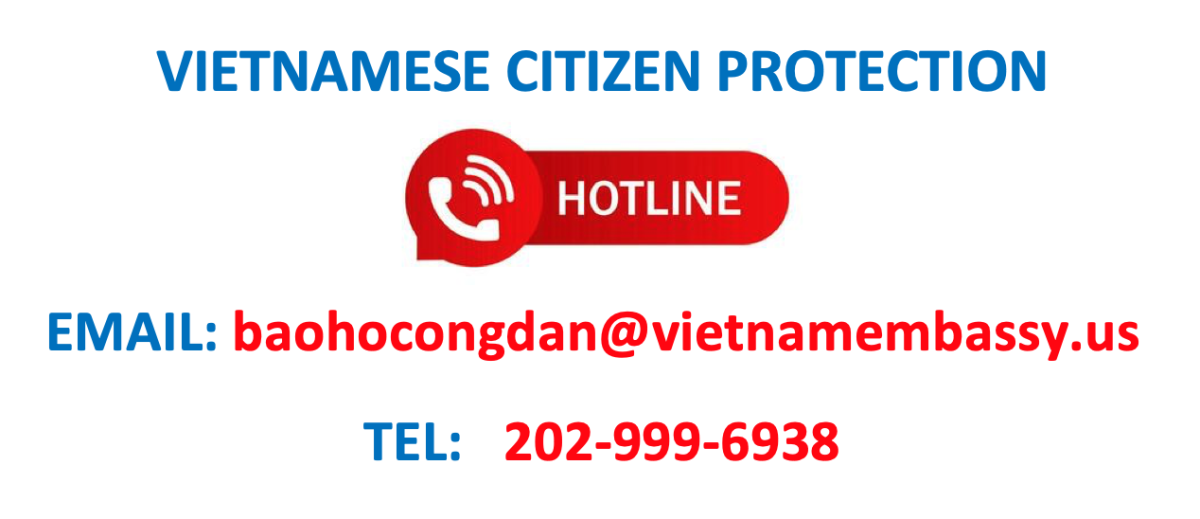Ambassador Nguyen Quoc Cuong's Op-Ed on Roll Call: After 20 Years of Trade Relations, Vietnam and U.S. Look Forward
After 20 Years of Trade Relations, Vietnam and U.S. Look Forward
Feb. 12, 2014
Twenty years ago this month, trade relations between Vietnam and the United States were restored when President Bill Clinton lifted a punishing trade embargo. This was an important step toward normalizing relations between our countries, putting our interactions on a course that continues to deepen, expand and benefit both nations.
For Vietnam and the United States, it took political leadership, with wisdom and courage, to move away from a past defined by painful memories and embrace the potential of a very different future driven by friendship and partnership.
That vision has been realized through relentless efforts by both countries. On the American side, the first steps 20 years ago by Clinton, supported by visionary Vietnam War vets such as then-Sen. John Kerry and Sen. John McCain, marked a milestone in our relationship.
Before his recent visit, Secretary of State Kerry said that he used to dream of the day when, “Someone would say the word Vietnam, and we would think of the country, not the war.” Now, Americans and Vietnamese speak more about expanding trade, building businesses, creating jobs, exchanging students, trading products and services, and catering to tourists. Every year, 1,800 containers loaded with U.S.-grown apples, pears, oranges, grapes, cherries and other produce travel to Vietnam. Together with pork, beef, soy, poultry and dairy products, these American exports are helping to stock the shelves of supermarkets in Vietnam.
America’s manufacturing products are also ubiquitous in Vietnam. In 2013 alone, Vietnamese companies signed contracts totaling $2.6 billion to buy American-made airplane engines and wind turbines, helping to support tens of thousands of U.S. manufacturing jobs.
Vietnam is currently the United States’ 29th largest trading partner. U.S. exports to Vietnam have doubled in just five years, amounting to $5.2 billion in 2013. Bilateral trade between the two nations now totals $30 billion a year — a 134-fold increase from 1994.
With direct investment amounting to $10.6 billion in December, the United States ranks seventh among foreign investors in Vietnam. American companies are gaining new customers and contracts while contributing to Vietnam’s development.
Those numbers will continue to grow. With a population of 90 million people and a gross domestic product growing by an average annual rate of 7 percent for the past 25 years, Vietnam is regarded by U.S. businesses as one of the most promising markets in Southeast Asia. Vietnam and the United States are negotiating the Trans-Pacific Partnership to establish a free-trade area constituting 40 percent of global GDP and one-third of world trade. This agreement would create more quality jobs and accelerate economic growth in the U.S., Vietnam and other TPP countries.
Increased trade and economic ties have also helped bilateral cooperation in other areas.
Vietnam continues to address the painful legacy of the past by searching for and returning the remains of American soldiers listed as missing in action. With an estimated 300,000 of our own people still unaccounted for, we have done everything possible to discover and return the remains of about 700 U.S. soldiers to date, while continuing to search for others still listed as MIA.
In our efforts to forge a new partnership with the United States, U.S. Navy and Coast Guard vessels have been allowed to dock for repairs and maintenance at our port facilities in Cam Ranh Bay.
As encouraging as the progress has been, we can still do more.
During President Truong Tan Sang’s visit to the U.S. in July and Kerry’s visit to Vietnam in December, both countries affirmed their comprehensive partnership in areas including economics and the environment.
Vietnam deeply appreciates those Americans who have supported the growth of relations between our countries with foresight and fortitude over the past 20 years. For those who still have doubts, remember that there is no better way to build peace and a better future for our children than through trade and commerce.
So, let us work together to advance the mutually beneficial trade and economic ties between the United States and Vietnam.
Together, we can ensure that the dawning of the day that Secretary Kerry and so many veterans from both our countries dreamed of — when conflict gives way to commerce and cooperation — brightens the lives of generations to come.



